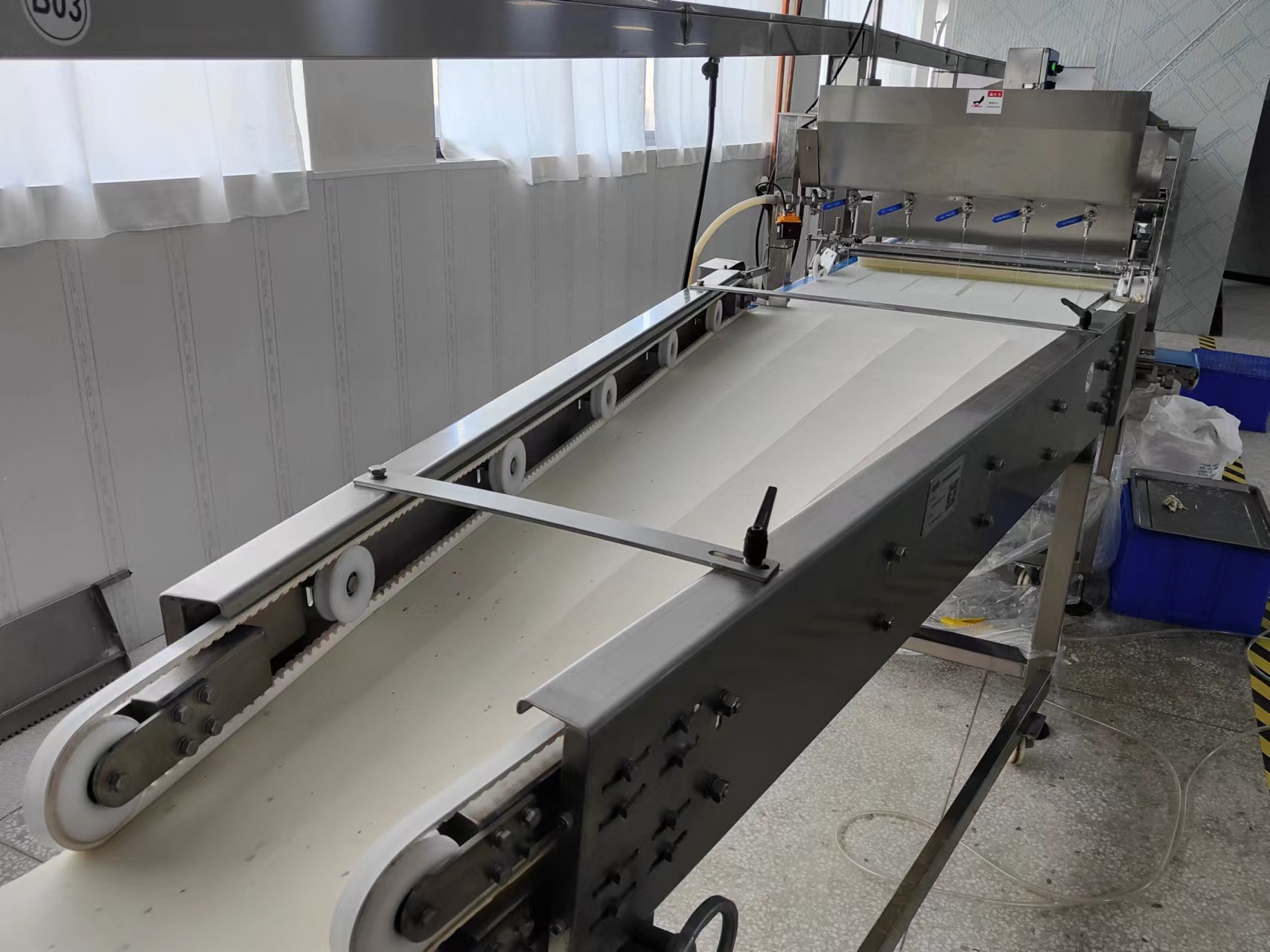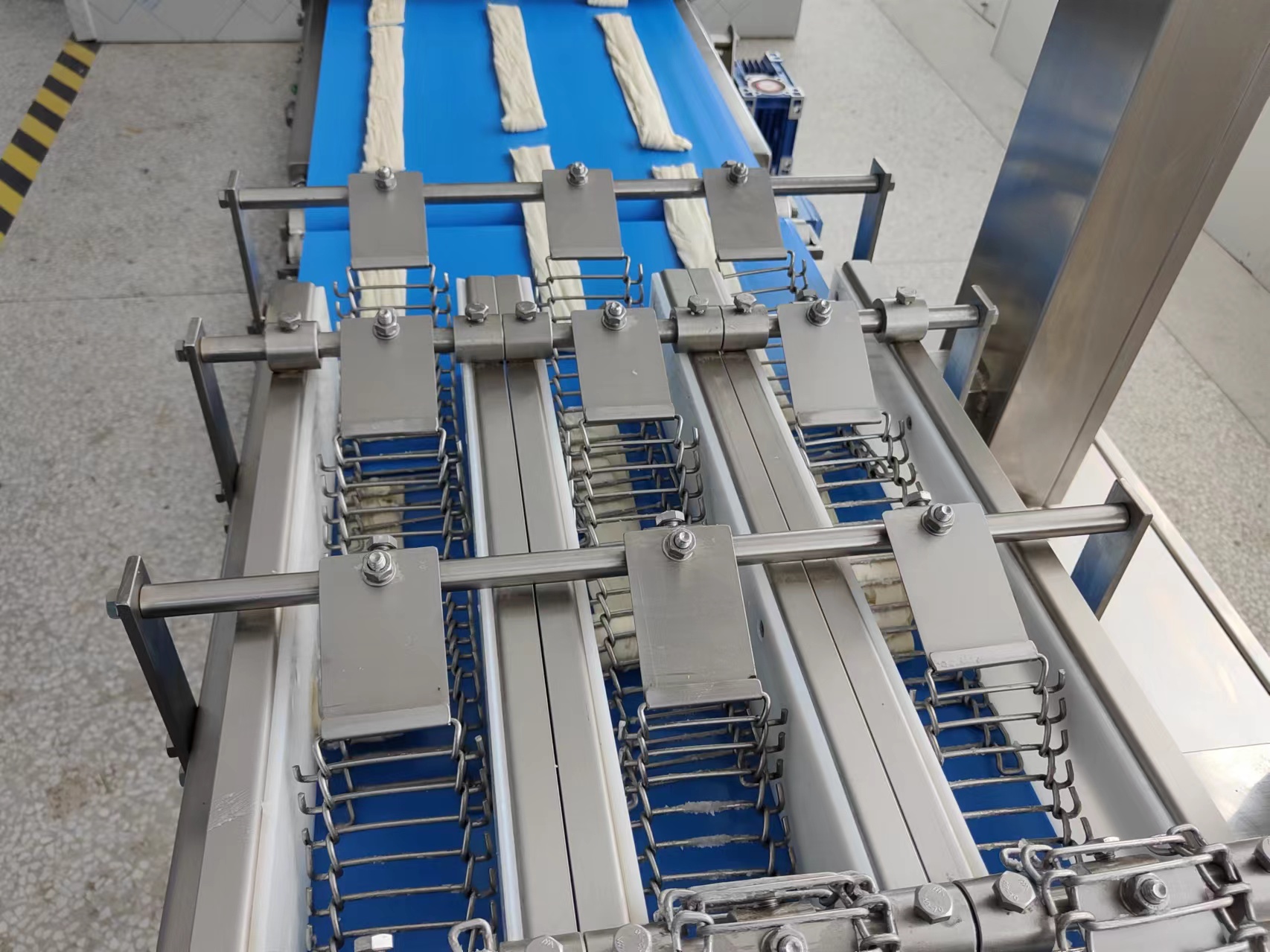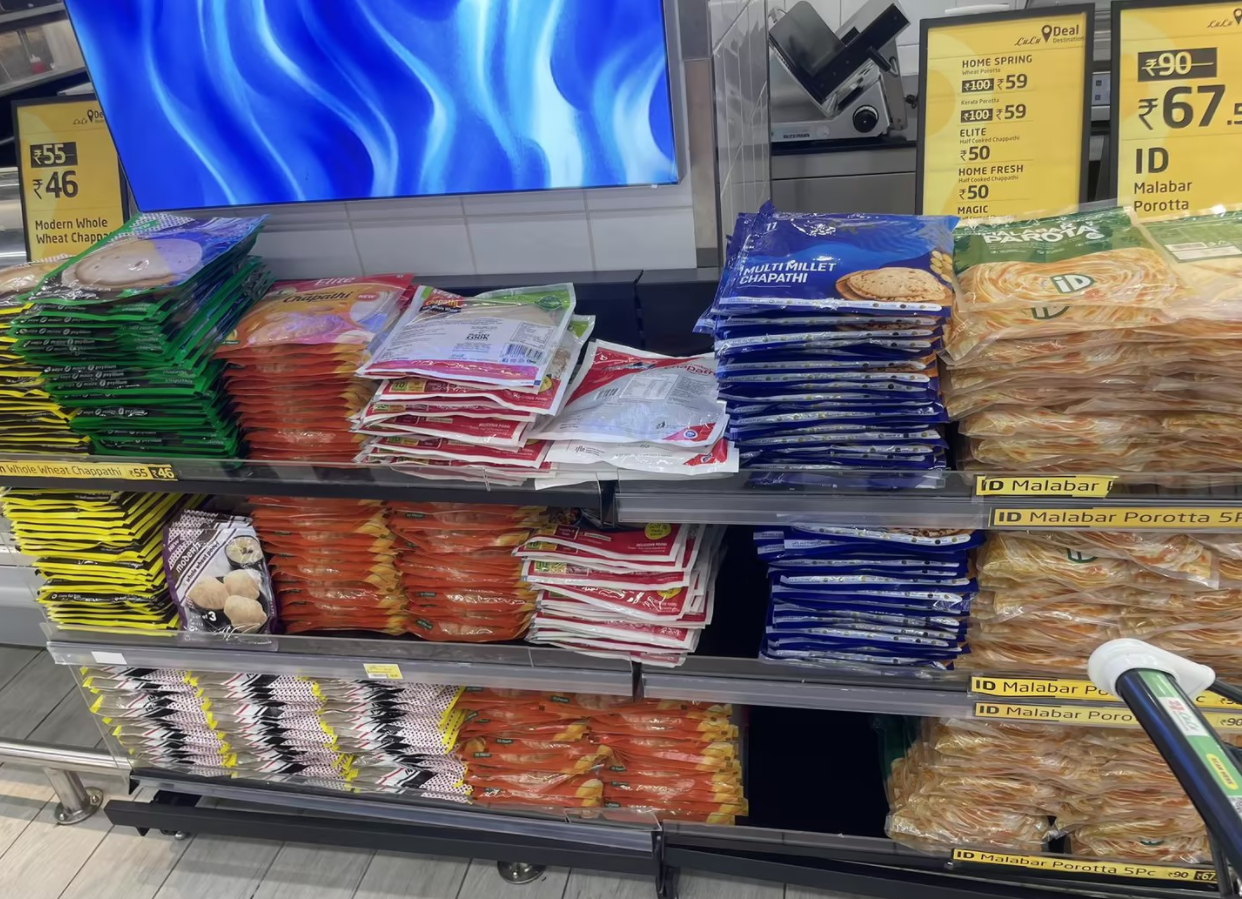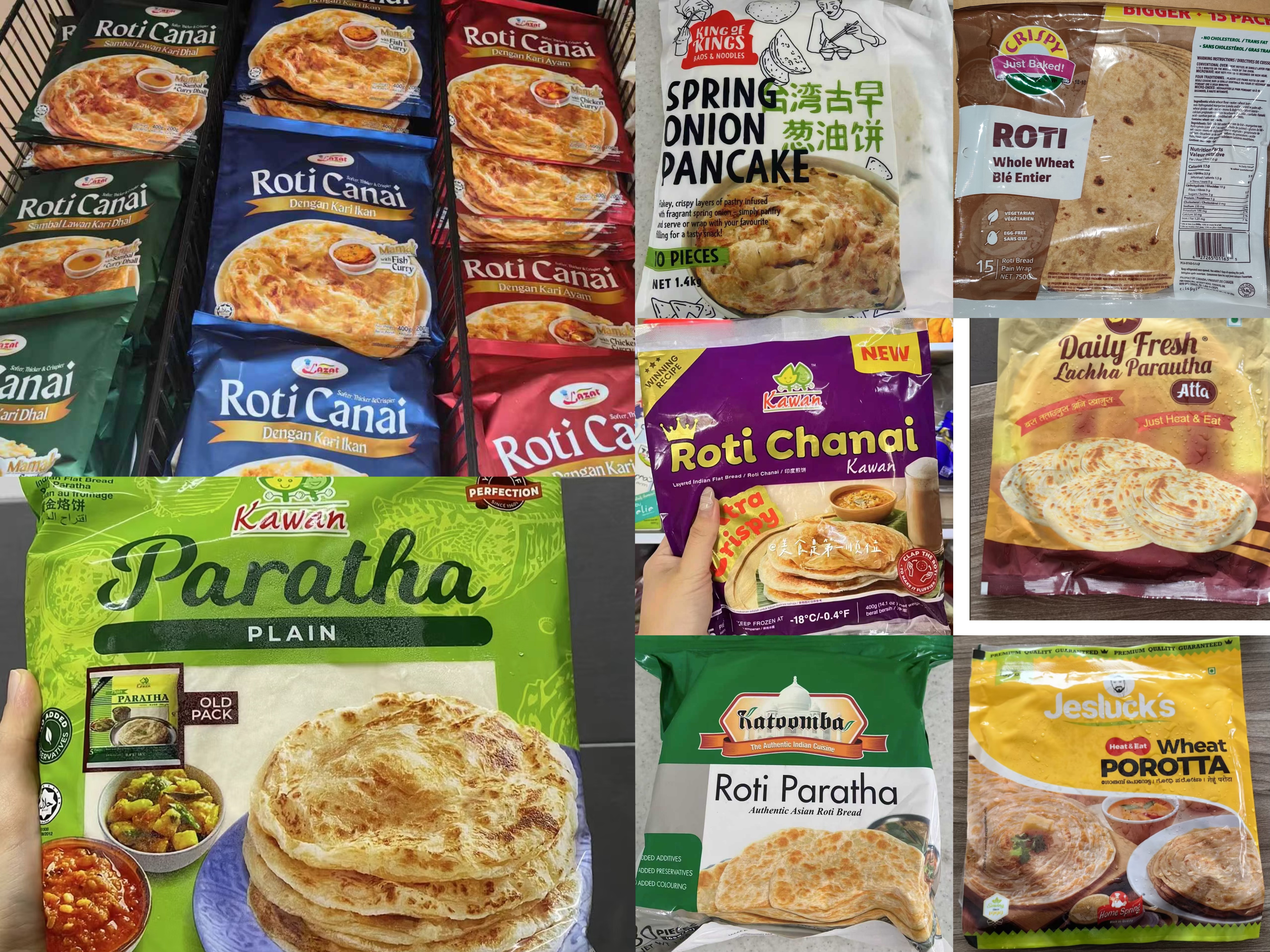In the early morning on the street, the aroma of noodles fills the air. The dough is sizzling on the hot iron plate as the master skillfully flattens and flips it, creating a golden, crispy crust in an instant. Brushing the sauce, wrapping with vegetables, adding eggs - a steaming, layered hand-pulled pancake is handed to you - this street food full of the flavor of daily life is now being precisely replicated globally by Chinese machinery at an efficiency of tens of thousands of pieces per hour.
Revolution in Precision Machinery: A Leap in Efficiency
When precision machinery replaced traditional manual operations, from dough processing, thinning and stretching, dividing and rolling, proofing and shaping to quick freezing and packaging, the entire production line achieved a leap in production capacity. Today, the Chenpin Lacha paratha production line can produce up to 10,000 pieces per hour. The increase in efficiency has pressed the accelerator for the explosive growth of hand-tossed pancakes in the global market.


Overseas Footprint: From Asian Enclaves to Mainstream Shelves
Rooting in Asian Enclaves: In Asian-populated areas of Europe and the United States, hand-pulled pancakes have long been a regular item in Asian supermarkets.
Mainstream "Breaking Through Boundaries": More significantly, in the frozen food sections of global retail giants such as Walmart, Carrefour, and Costco, the presence of hand-held pizza is rapidly increasing. It is being displayed alongside local frozen pizzas and wraps, attracting global consumers who seek quick and delicious food. The shift in shelf location silently signals that it has been accepted by a broader consumer group.

Growth Engine: Unleashing Overseas Potential
The domestic market is huge (with an annual consumption of approximately 1.2 billion pieces), and the data reveals an even more exciting trend: The growth rate of the overseas market far exceeds that of the domestic market, and its potential is virtually unlimited. Especially in regions with large populations such as Southeast Asia and India, naan bread is occupying half of the frozen food market in a more diverse form (such as Lacha paratha in India, Roti Canai in Malaysia/Singapore, and Roti Pratha in Indonesia, etc.).

Solid Backing: Stable Domestic Base
In the first quarter of 2025, sales in regions such as Northeast, North China, and South China were steady, while the northwest region achieved a strong growth of 14.8%. In the frozen food market, although hand-held pancakes account for approximately 7% of the total, their stable annual growth rate far exceeds that of traditional categories subject to seasonal restrictions (such as dumplings and tangyuan), making them truly a "year-round perennial product", providing strong support for overseas expansion.
The backbone of this "world-class pie" is China's "smart" manufacturing strength. Equipment manufacturers like Shanghai Chenpin represent this, and their hand-held pancake production lines have been sold to over 500 sets worldwide.

More importantly, there is the flexible upgrading of technology: The same production line can produce different weights of dough bases in real time. Customized design can flexibly adjust the formula and functions, precisely adapting to the taste preferences of consumers in Europe, America or Southeast Asia.
From street fireworks to global refrigerators, the rise story of hand-held pancakes is a vivid illustration of how China's food industry has moved from "manufacturing" to "intelligent manufacturing". With its strong industrialization capabilities and flexible market adaptability, "Chinese intelligent manufacturing" is quietly leaving a distinct mark on the global frozen food landscape.
Post time: Aug-11-2025
 Phone: +86 21 57674551
Phone: +86 21 57674551 E-mail: sales@chenpinsh.com
E-mail: sales@chenpinsh.com![Y5[98K8IZ$]AE`8_~L02Q{5](https://www.chenpinmachine.com/uploads/Y598K8IZAE8_L02Q5.png)

